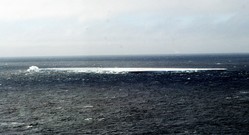Global Cryosphere Watch
First session of the Implementation Meeting
Director General Árni Snorrason is now in Geneva, at the first session of the GCW Implementation Meeting, held 21-24 November 2011 by the World Meteorological Organization (WMO).
GCW is one of the projects of the Panel on Polar Observations, Research and Services (EC-PORS). The Icelandic Meteorological Office represents Iceland in this international cooperation.
The Global Cryosphere Watch (GCW) should enhance the capability of the research community and operational services to predict the future state of the cryosphere. It should provide quality assured global and regional products on the state of cryosphere.
Background
The cryosphere collectively describes elements of the Earth System containing water in its frozen state and includes solid precipitation, snow cover, sea ice, lake and river ice, glaciers, ice caps, ice sheets, permafrost, and seasonally frozen ground. The presence of frozen water in the atmosphere, on land, and on the ocean surface affects energy, moisture, gas and particle fluxes; clouds; precipitation; hydrological conditions; and, atmospheric and oceanic circulation. Elements of the cryosphere also contain important records of past climate, providing benchmarks for interpreting modern climate change.
The cryosphere exists on all latitudes of the Earth and occurs in approximately one hundred countries of the world. While the cryosphere is an integrative element within the climate system and provides one of the most useful indicators of climate change, it is arguably the most under-sampled domain in the climate system.
The contribution of the cryosphere to sea-level rise in a changing climate is a critical issue for society. The cryosphere, being frozen water, is an intrinsic part of the global water cycle, for example, impacting water, weather, energy and agriculture. Accurate determination of precipitation, including the solid component, is essential to understanding the global water cycle. Snow- and glacier-melt are critical sources of water for agricultural, domestic and industrial water supply and hydropower production, and directly contribute to flood and drought hazard conditions. Lake-, river- and sea-ice directly affect high latitude transportation and ecosystems, including regional and global transportation routes, regional economic development, and the well-being of northern peoples. Other short and long term hazards directly related to the cryosphere include avalanches, glacier lake outburst floods, subsidence due to thawing permafrost, snowstorms, blizzards, icing, coastal erosion, and of course sea-level rise.
GCW should enhance the capability of the research community and operational services to predict the future state of the cryosphere and provide quality assured global and regional products on the state of cryosphere.





